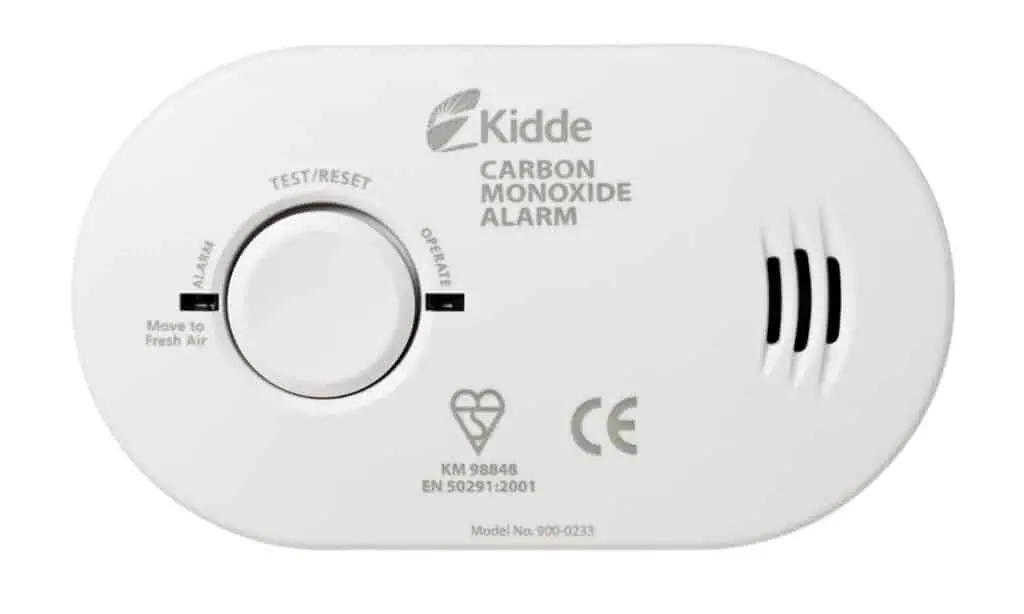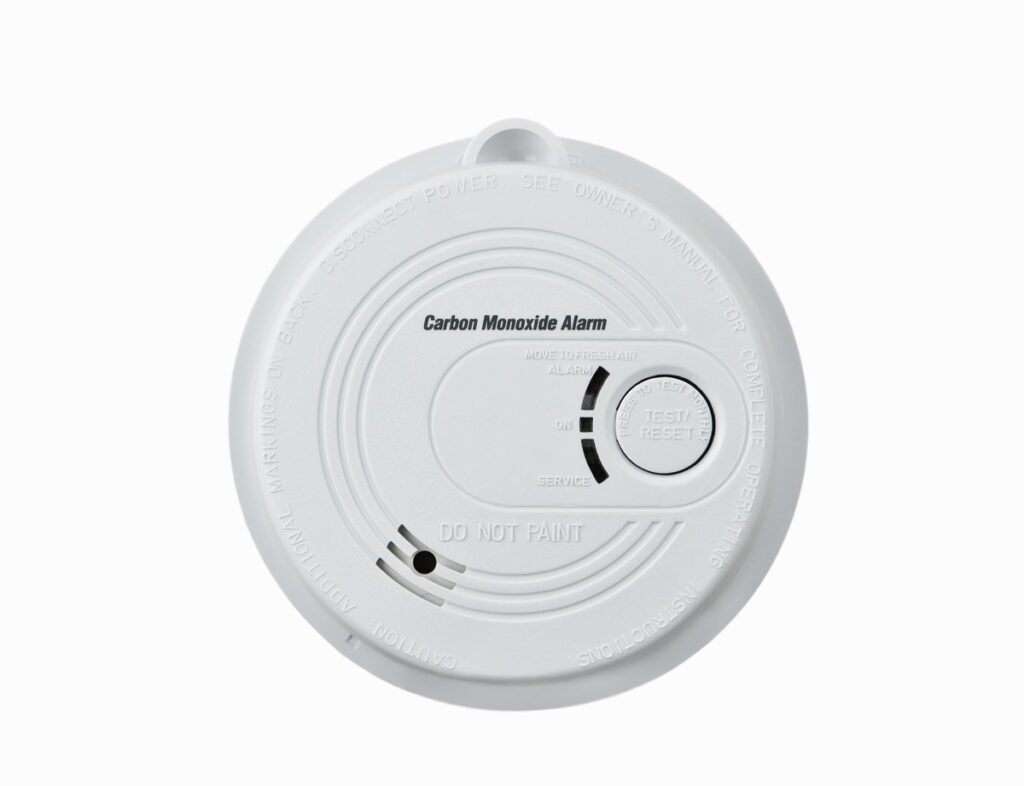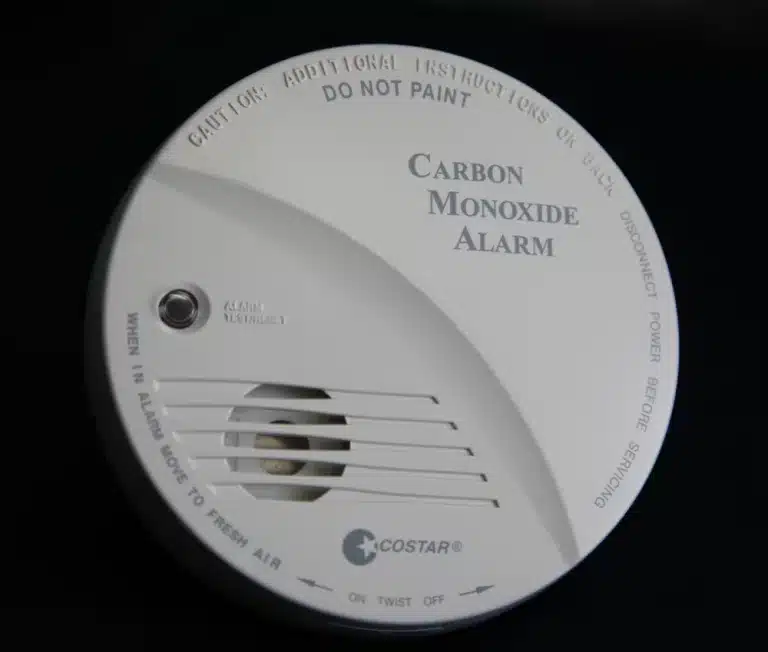Introduction
How Long Are Carbon Monoxide Detectors Good For: Greetings, and welcome to an informative discussion about the lifespan of carbon monoxide detectors. In a world where safety is paramount, being equipped with accurate knowledge about the longevity of these crucial devices is essential. Carbon monoxide, often referred to as the “silent killer,” is a deadly gas that can emanate from various sources in our homes, including gas appliances, fireplaces, and vehicles.
Our journey will encompass the various factors that influence their lifespan, the different types of detectors available in the market, and the recommended measures to ensure the continuous functionality of these life-saving devices. Whether you’re a diligent homeowner, a vigilant tenant, or someone responsible for the safety of a commercial space, understanding the nuances of carbon monoxide detector longevity is paramount.
Together, we will navigate through the technical aspects, industry guidelines, and practical steps that define the lifecycle of carbon monoxide detectors. By the end of this discussion, you will be equipped with the knowledge to make informed decisions about when and how to replace these devices, thereby securing the well-being of those under your care.

How do you know if your carbon monoxide detector needs to be replaced?
If the alarm emits a chirp every 30 seconds, it is either an end-of-life alert or a sensor error. If the alarm emits a chirp every 60 seconds, it indicates the battery power is not sufficient to power the unit in full alarm. An end-of-life or sensor error will not respond to a battery change.
The age of your carbon monoxide detector is a significant factor in determining whether it needs replacement. Most detectors have an expiration date or a manufacturer’s recommendation for replacement, typically within the 5 to 7-year range. Over time, the sensors and components within the detector can degrade, leading to decreased accuracy and reliability.
Frequent false alarms or malfunctions could indicate that your carbon monoxide detector is no longer functioning as intended. While occasional false alarms can occur due to dust or humidity, persistent or recurring issues should not be ignored. These malfunctions could compromise the device’s ability to accurately detect dangerous levels of carbon monoxide.
Many modern carbon monoxide detectors are equipped with end-of-life warnings. When the device reaches the end of its useful life, it may emit a distinct chirping sound or display a warning light to indicate that it needs replacement. It’s crucial to take these warnings seriously and replace the detector promptly.
If the display screen of your carbon monoxide detector is fading, dimming, or not displaying information clearly, it might be time for a replacement. Similarly, if the indicator lights are not functioning correctly or are consistently illuminated, it’s a sign that the device is compromised and should be replaced.
Does carbon monoxide detector expire?
Carbon monoxide detectors last between five and seven years. The recommendation is to replace them every five years because their ability to detect carbon monoxide is questionable after that point.
Carbon monoxide detectors are equipped with sensors that degrade over time due to exposure to environmental factors, such as temperature changes, humidity, and airborne contaminants. The sensors are responsible for detecting carbon monoxide levels and triggering alarms when they exceed safe thresholds. Over the years, the accuracy and sensitivity of these sensors can diminish, potentially compromising the device’s ability to provide timely warnings.
Most carbon monoxide detectors come with manufacturer guidelines or recommendations for replacement. While there isn’t a uniform expiration date for all detectors, manufacturers typically suggest replacing them every 5 to 7 years. This timeline is based on the average lifespan of the sensors and other components within the device. Following these recommendations helps ensure that your carbon monoxide detector remains reliable and effective in detecting dangerous gas levels.
Many modern carbon monoxide detectors are designed with an end-of-life warning feature. As a detector nears the end of its useful lifespan, it may emit a chirping sound or display a warning light, signaling the need for replacement. It’s important not to ignore these warnings, as they indicate that the device’s sensors are no longer functioning optimally.
Regularly testing your carbon monoxide detector is essential to ensure its continued effectiveness. Test the device’s alarms using the dedicated button provided. If the alarm sound is weak, inconsistent, or absent, it’s a sign that the detector might need replacement. Additionally, replacing batteries as recommended by the manufacturer is crucial to maintaining the device’s performance.
How long do carbon monoxide detector batteries last?
CO alarms should be installed on each level of the home and outside sleeping areas. Change the batteries: Batteries should be replaced in alarms at least once each year, unless the alarms have sealed 10-year batteries. Replace the smoke alarm if it is more than 10 years old.
Battery Type: As mentioned, the type of battery plays a significant role in determining its lifespan. Lithium batteries generally have a longer life compared to alkaline batteries.
Quality: The quality of the battery itself can impact its lifespan. Opting for reputable brands and higher-quality batteries can lead to more reliable and longer-lasting power.
Usage: The frequency of alarms, testing, and overall usage of the detector can affect battery life. Frequent alarms and testing can drain the battery faster.
Temperature: Extreme temperatures, whether hot or cold, can impact battery performance. Detectors installed in areas with fluctuating temperatures might experience shorter battery life.
Detector Features: Some carbon monoxide detectors have additional features like digital displays or Wi-Fi connectivity. These features can consume more power and potentially lead to shorter battery life.
Why is my carbon monoxide detector beeping?
Usually, the annoying beeping caused by a carbon monoxide detector is to alert you about a malfunctioning battery. If the old battery requires changing or it’s slipped out of place, the unit will chirp. Try reinstalling the battery or replacing it, and then reset your device.
High Carbon Monoxide Levels: The most critical reason for the beeping is a presence of high carbon monoxide levels in your surroundings. This could result from faulty gas appliances, blocked ventilation, or any situation that leads to improper combustion of fuels.
Expired Detector: Carbon monoxide detectors have a finite lifespan, typically around 5 to 7 years. If your detector is approaching the end of its useful life, it might start beeping to signal the need for replacement.
Low Battery: Many carbon monoxide detectors have a low battery alert. If the battery is running low, the device will beep intermittently to remind you to replace it.
Malfunction: Like any electronic device, carbon monoxide detectors can experience malfunctions. If the sensors or other components are compromised, the detector might produce false alarms or beeping.
Tampering or Damage: Accidental tampering, damage, or exposure to extreme temperatures can also trigger false alarms or beeping in your carbon monoxide detector.
Do carbon monoxide detectors beep continuously?
Check Your CO Detector
The significance of different beeping might mean different things for different types of detectors. If your detector is low on battery, you will likely hear a short chirp every minute. To warn of dangerous CO levels, most detectors will beep 4 or 5 times in a row about every 4 seconds.
High Carbon Monoxide Levels: The most critical reason for continuous beeping is the detection of high levels of carbon monoxide gas. This could stem from faulty gas appliances, blocked ventilation, or any circumstance causing improper fuel combustion.
Expired Detector: Carbon monoxide detectors have a finite lifespan, usually around 5 to 7 years. When a detector approaches or reaches the end of its useful life, it might start beeping continuously to indicate that it requires replacement.
Malfunction: Like any electronic device, carbon monoxide detectors can experience malfunctions. Sensor issues, electrical problems, or other technical faults might cause the device to emit false alarms or continuous beeping.
Tampering or Damage: Accidental tampering, exposure to extreme temperatures, or physical damage to the detector can trigger false alarms and continuous beeping.
Evacuate: If the continuous alarm sounds and you suspect an actual carbon monoxide leak, evacuate the premises immediately. Get to fresh air and call emergency services from a safe location.
Ventilation: If you suspect the continuous beeping is due to a low battery or a temporary issue, open windows and doors to ventilate the area. However, remember that ventilation is not a substitute for addressing the root cause.
How often does a carbon monoxide detector flash?
Red light flashes 8 times (in 2 seconds) every 40 seconds – 300 ppm CO detected for approximately 3 minutes. In addition, when the Test button is pressed the horn will sound, and the red light will only flash if the unit has previously detected CO and been in alarm.
Normal Operation: Under regular conditions, a steady or slow flash pattern usually indicates that the detector is functioning correctly and is actively monitoring the environment for carbon monoxide gas.
End-of-Life Warning: As the detector nears the end of its useful lifespan, it might flash rapidly or display a specific blinking pattern to signal the need for replacement.
Low Battery Alert: A carbon monoxide detector with a low battery might exhibit a distinct flash pattern to indicate that the battery needs replacement.
Error or Malfunction: In the event of a malfunction or sensor error, the detector might display an erratic or inconsistent flashing pattern to alert users of a problem that requires attention.
Carbon Monoxide Detection: When the detector senses elevated levels of carbon monoxide in the air, it might initiate a different flashing pattern to draw immediate attention to the potential danger.
Does a carbon monoxide detector beep 3 times?
A carbon monoxide detector beeping three times means that your device is malfunctioning.
Low Battery: A common reason for a carbon monoxide detector to emit three beeps is to signal a low battery. The device is alerting you that the battery powering the detector needs replacement. Ignoring this signal could compromise the detector’s ability to function properly.
End-of-Life Warning: Some carbon monoxide detectors are programmed to emit a three-beep pattern when they are nearing the end of their recommended lifespan, typically around 5 to 7 years. This is a reminder that the detector should be replaced to ensure continuous and accurate monitoring.
Carbon monoxide is a potentially life-threatening gas, and prompt response to detector alerts is essential. Regularly maintaining, testing, and replacing batteries or detectors is a crucial step toward ensuring the safety of your household.
The three beeps emitted by a carbon monoxide detector hold vital information about the device’s status. Whether it’s indicating a low battery or the end of its recommended lifespan, responding promptly to these alerts is paramount for maintaining a secure living environment.
By understanding the meanings behind these beeps and taking the necessary actions, you’re demonstrating a proactive commitment to safeguarding yourself and your loved ones from the potential dangers of carbon monoxide exposure.
How fast does a carbon monoxide detector beep?
Between every 30 seconds to five minutes
The first indication of a potential issue is a beep or chirp—occurring anywhere between every 30 seconds to five minutes. This could be one of two things. A beeping or chirping CO detector could signify the presence of gas, or a low battery. Regardless of the reason, further action should be taken.
Continuous Beeping: If a carbon monoxide detector emits a continuous, uninterrupted beep, it’s a sign that the device has detected dangerous levels of carbon monoxide gas in the air. This demands immediate attention and action to evacuate the area and seek fresh air.
Rapid Intermittent Beeping: In some cases, a carbon monoxide detector might emit rapid intermittent beeping, indicating a potentially hazardous condition. While not a continuous alert, this pattern still signifies the presence of carbon monoxide and should not be ignored.
Regular Beeping or Alarms: Regular beeping or alarm sounds from a carbon monoxide detector during periodic testing or maintenance indicate that the device is functioning correctly and actively monitoring for potential danger.
Test Regularly: Regularly test your carbon monoxide detector using the designated test button to ensure its alarms are functioning correctly.
Replace Batteries: Replace batteries according to the manufacturer’s recommendations to ensure the detector’s optimal performance.
Replace Expired Detectors: Follow manufacturer guidelines for replacing the detector itself when it reaches the end of its recommended lifespan.

Conclusion
To ensure the ongoing reliability of these life-saving devices, it is important to adhere to manufacturer guidelines regarding testing, maintenance, and replacement. Regularly testing your carbon monoxide detectors, replacing batteries as needed, and adhering to suggested replacement timelines will help ensure their continued effectiveness.
Remember that the average lifespan of a carbon monoxide detector typically ranges from 5 to 7 years, but it’s essential to check the specific recommendations of your device’s manufacturer. By remaining proactive and informed about the condition of your detectors, you are taking a vital step toward safeguarding yourself, your loved ones, and anyone else who shares your living or working space.
As technology advances and safety standards evolve, carbon monoxide detectors continue to improve in accuracy and durability. By staying informed about these advancements and staying committed to a culture of safety, you contribute to creating a secure environment where the risks of carbon monoxide exposure are minimized. Ultimately, the investment in properly functioning carbon monoxide detectors is an investment in the well-being of all those who inhabit the spaces we cherish.

